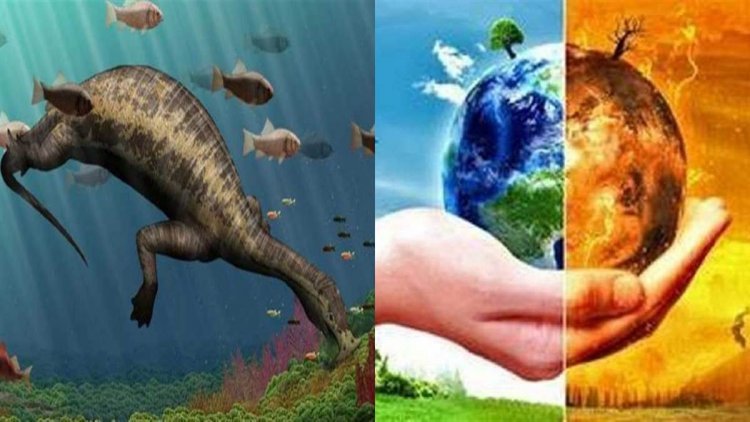Climate Change: How Reptiles Rise in 60 Million Years of Global Warming: Harvard University Study Revealed
Researchers took a closer look at how a large group of organisms evolved because of climate change, which is particularly relevant today as temperatures continue to rise. Because carbon dioxide is increasing.

Due to climate change, it is believed that due to this many species of the world will become extinct. Sometimes this creates situations up to the great destruction. The history of the evolution of animals has seen that while most species are destroyed and extinct in the Great Depression, the same reptiles were not only successful in saving themselves, but their evolution and diversity came to the fore. The result is that reptiles are the most diverse and undergone evolutionary change in the world to date. Researchers have tried to know this in a new study.
A new study led by Harvard University says. More than 250 million years ago, during the end of the Permian period, and the beginning of the Triassic, the rate of evolution and diversity of reptiles began to explode, leading to the development of a wide variety of abilities, body plans, and traits. Research by Harvard paleontologist Stephanie Pearce suggests that evolution and diversification, observed in early reptiles but instead directly driven them, was the increase in global temperature that caused climate change in the first place."
Climate change actually directly anticipated the adaptive response of reptiles to help create this vast array of eruptions of new body schemes and groups," said Tiago R. Simoes, a postdoctoral fellow in the Tri Pierce Lab and lead author of the study.
Researchers took a closer look at how a large group of organisms evolved due to climate change, which is particularly relevant today as temperatures continue to rise. In fact, the rate of carbon dioxide has been released. Today's atmosphere is about nine times over that time frame, culminating in the largest climate change-driven mass extinction of all time, 252 million years ago.
“The major changes in global temperature can be dramatic and vary. The study involved nearly eight years of data collection in the form of Simies T. It took more than 20 countries and 50 countries to take scans and snapshots of more than 1,000 reptile fossils. More arrived at different museums. The dataset showed that there was an increase in global temperature, which began about 270 million years ago and lasted at least 240 million years ago. This was followed by rapid body changes in most reptile lineages. For example, some large cold-blooded animals became smaller so that they could cool down more easily; others evolved to life in water to the same effect.
The smaller reptiles, which first gave rise to lizards and tuaters, went down a different path than their larger reptilian brethren, the researchers said. Their growth rate slowed and stabilized in response to increasing temperature. This was because small-bodied reptiles were already better adapted to rising heat as compared to larger reptiles that could release heat from their bodies more easily when temperatures warmed up very quickly around the Earth.

 The Frontier Times
The Frontier Times 










